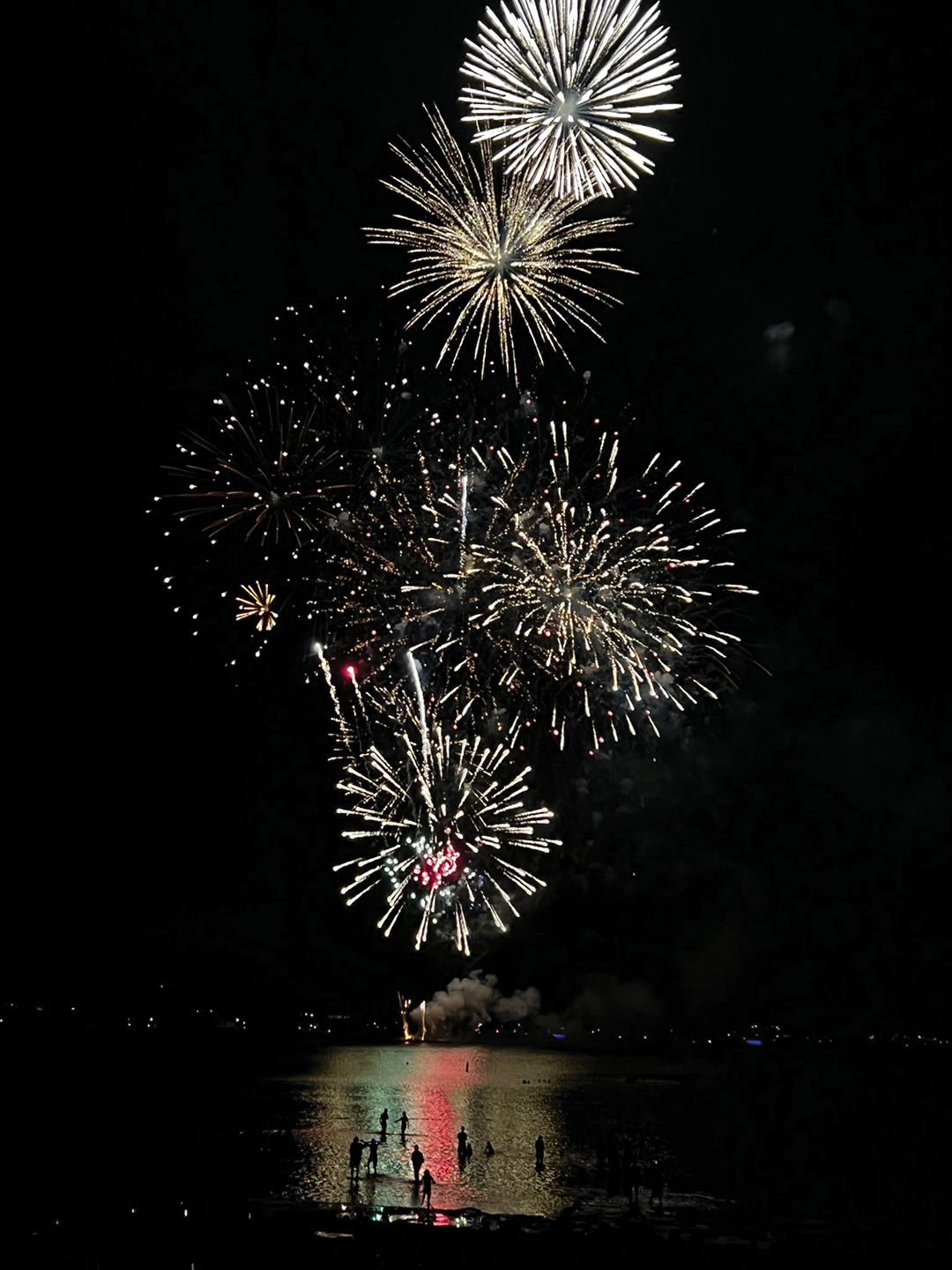
Photos: Tate Carlson
White Bear Lake sailors talk about their love for the A Scow.
Nothing says “White Bear Lake” quite like a sailboat race on a summer’s evening. The White Bear Yacht Club has been sailing for 125 years, says Gene Altstatt, a member of the club and an admirer of the A Scow sailboat.

Gene Altstatt
Summers on the lake are packed with action, with races on Saturday mornings and afternoons, and every Monday through Thursday evenings from June through August.
Some of the sailors have grown up in the world of sailing—like Altstatt, whose family has been boating for generations. “Some people are new to it, and some families are several-generation racers,” says Altstatt.
Jack Madill, another member of the club who loves A Scows, came to sailing through his family too—but it was his kids who got involved first. “I’m a transplant to the area, so I didn’t grow up sailing,” says Madill. He enrolled his children in sailing school, and he followed, eventually becoming a skipper.

Jack Madill
Lee Alnes is a multi-time racing champion and skipper of Euphoria who serves as commodore of NCASA (National Class A Scow Association). Alnes started his racing career early in life.
“My parents took me out on my first race when I was 3 years old,” says Alnes.
The A Scow is not an easy boat to race. There’s no keel—it’s purely a sport boat. Everyone’s number one task is to keep the boat upright and if the wind is over 15 miles per hour, that’s very challenging. If a boat capsizes, it’s out of the race and it takes power boats to right it.
“With the A Scow, teamwork is especially important. Anyone can make the mistake that makes the boat capsize,” says Alnes.
The White Bear Lake Sailing School has programs for kids ages 5 through teens as well as programs for adults. Aspiring sailors can also learn the art without going to a formal sailing school. “Make friends with sailors and get yourself invited to be on a crew,” says Madill.
High schools can be another entry into the world of sailing, says Madill. Mahtomedi High School, White Bear Lake Area High School and other local schools have sailing teams.
For those unfamiliar with the world of sailing, a scow is any flat-bottomed boat. The A Scow is one design among many classes of boats. Sailboats range from one-person boats that are about 14 feet long up to A scows, which are 38 feet, Altstatt says.

“[The A Scow] has a long legacy—over 100 years,” says Altstatt. What inspires the love for A Scows? They’re designed for speed, says Altstatt. “It’s one of the fastest sailing boats ever built. There are no motors—it’s all managed by sails, ropes and pulleys,” he says.
“The A Scow is one of the most spectacular boats for their size, grace and beauty. They’re beautiful to watch,” says Madill.
White Bear Lake plays a crucial role in A Scow history. John Johnson, an immigrant from Norway, founded Johnson Boat Works in 1896. He designed the Minnezitka, a 38-foot scow, which won the championship on White Bear Lake in 1900. This boat was beginning of the A Scow line.
Fletcher Driscoll is another major figure in A Scow history, says Altstatt. “Driscoll was an avid sailor who had his own boat works. He invigorated the A Scow fleet in about 2005 when he bought several used A Scows. Now there are eight to 12 A Scows racing in White Bear Lake. It’s one of the largest A Scow fleets in the universe,” says Altstatt.
How does one become part of the world of sailing if not born into it? “Boat owners need crew. People can get involved through sailing school, or it can be casual, friends of friends are asked to join crews,” says Madill.
Altstatt, Madill and Alnes want to encourage youth and adults to try out sailing. “It can be a lifelong sport,” says Altstatt.
Not ready to get into a boat just yet?
Altstatt, Madill and Alnes invite people to come to an event as a spectator and get an idea of how racing works.
“Make friends with sailors. Being a spectator is fun, too. People bring picnics, and some watch from the water in a pontoon. Often after racing, crews gather for social time, which is often as much fun as the competing,” says Madill.
Races are subject to weather, especially since A Scows are powered by wind only. Altstatt says that to hold a race, the wind should be at least five miles per hour. There are also wind limits in place for safety. Skippers gather an hour before a race to determine if the weather is suitable,” says Madill.
Spectator or sailor, everyone can enjoy these giants that grace White Bear Lake.
Windward ho—see you at the lake!






















